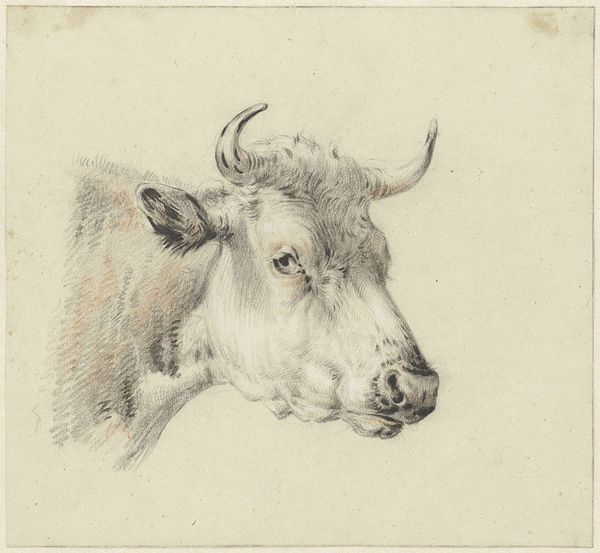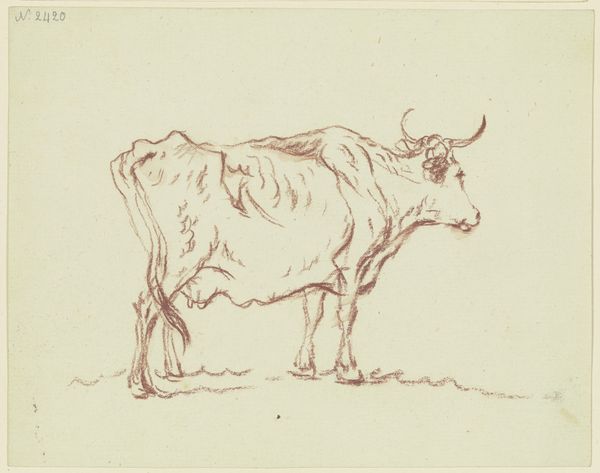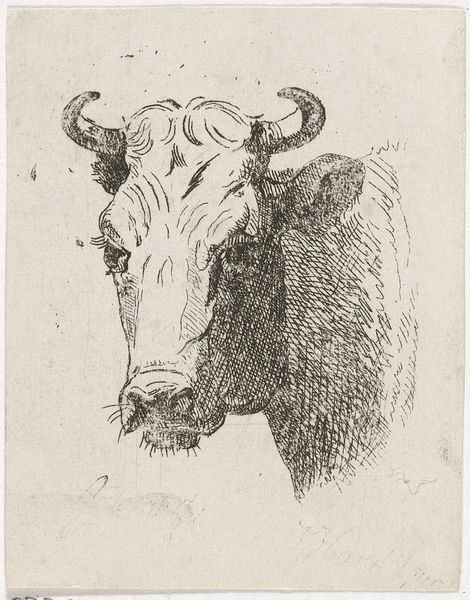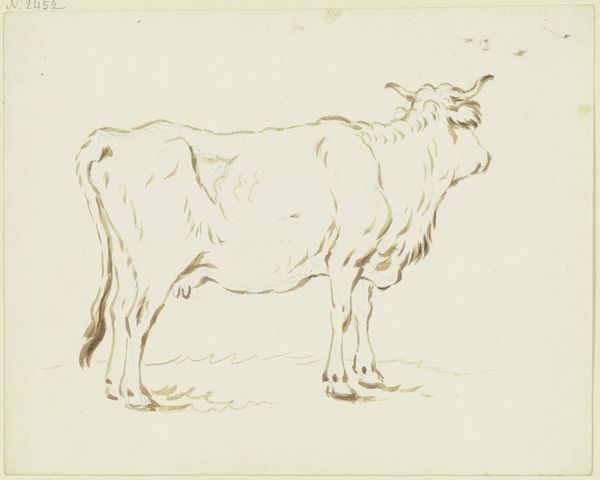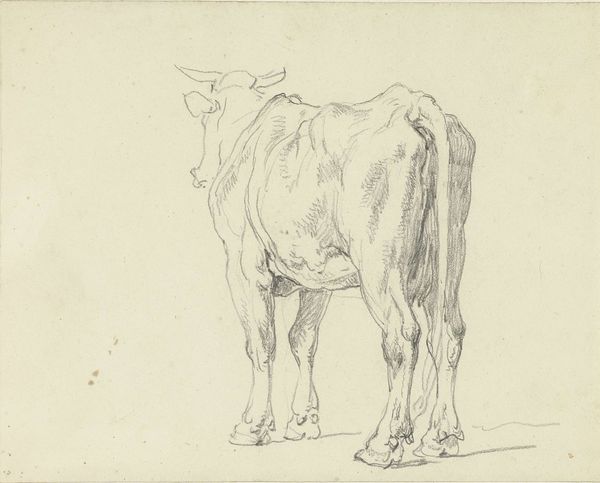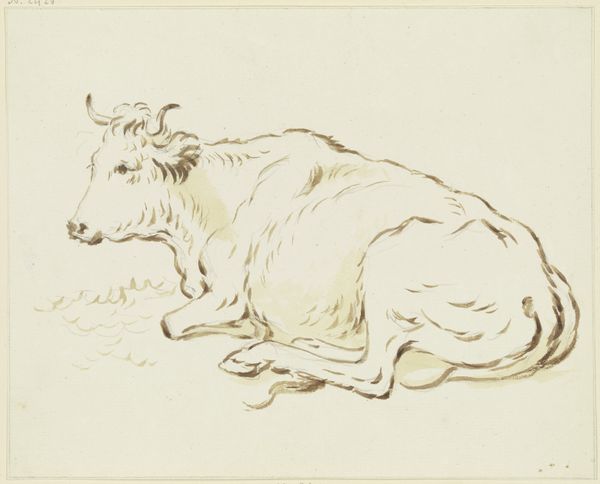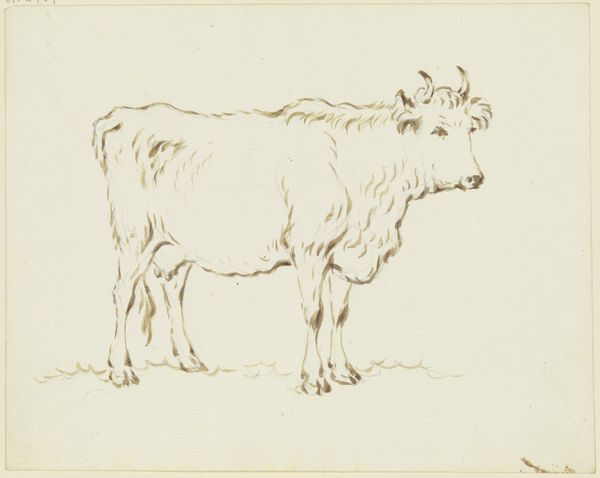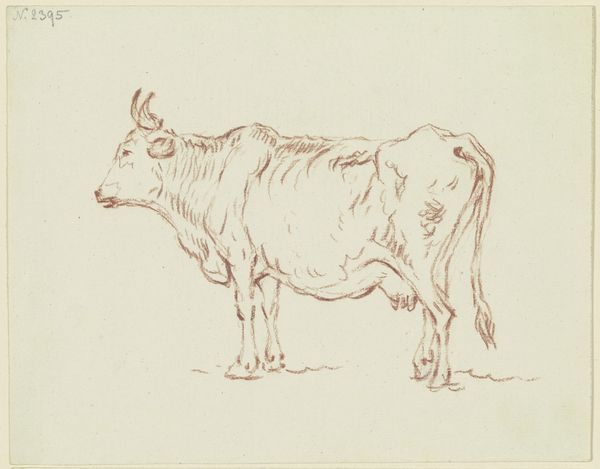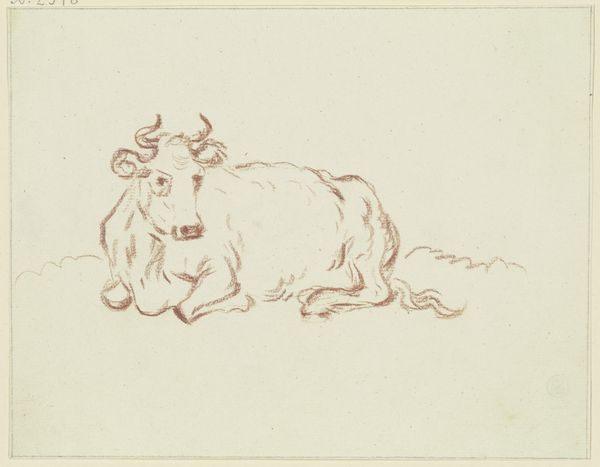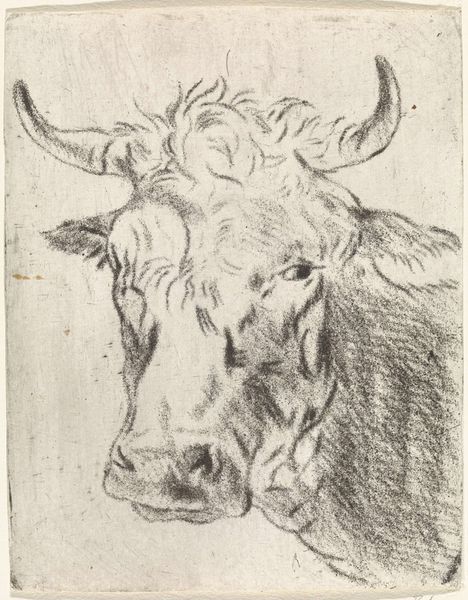
Dimensions: overall: 42.2 x 36.5 cm (16 5/8 x 14 3/8 in.)
Copyright: National Gallery of Art: CC0 1.0
Editor: Here we have John Marin's "Cow's Head," created in 1918 using pencil. It’s a seemingly simple sketch, yet the cow's gaze feels incredibly direct, almost confrontational. What symbolic layers do you see beneath the surface of this work? Curator: The immediacy is striking, isn't it? Consider how the cow, across cultures, often embodies nurture and abundance. But Marin presents it raw, almost elemental. Note how he renders the form, not as a portrait of bovine serenity, but with those stark lines that disrupt the smooth, idealized form. Does this rawness suggest a connection to the hardships and uncertainties of the World War I era in which it was created? Editor: That’s interesting, the idea of disruption reflecting the times. The incomplete nature of the drawing, does that contribute to the unsettling feeling? Curator: Precisely! What isn't shown becomes as important as what is. The blank spaces aren’t empty, they resonate. They imply the disintegration of familiar, stable realities. Look closely at the eyes and how they are darkened and outlined more precisely than any other part of the face. Are they sad, aggressive, or simply vulnerable? Editor: I see that now. The emphasis on the eyes creates a strong focal point, intensifying the cow’s gaze. It’s like we’re being asked a question. Curator: Indeed! And the color, the soft washes, do they amplify or soften that impact? Consider, too, the choice of subject: the animal, often associated with the rural and pastoral, presented in this stark, almost urban way. A symbol in transition? Editor: So, more than just a drawing of a cow, it's a reflection of a changing world, a world in turmoil, using the symbolic weight of the animal to convey deeper meaning. That gives me a lot to consider! Curator: It does that for me as well.
Comments
No comments
Be the first to comment and join the conversation on the ultimate creative platform.

